October itinerary in Japan Day 1 (Ishikawa Day 1 Meal edition)
(Wednesday, October 20)
Table of contents
1. Lunch “Kappo Sushi Yonehachi”
3. Dinner “Chohachi Kanazawa Katamachi store”
1. Lunch “Kappo Sushi Yonehachi”
After visiting “Komatsu no mori”, I had lunch at “Kappo Sushi Yonehachi“, the oldest sushi restaurant in Komatsu City. It was about 10 minutes on foot from JR Komatsu Station. The sushi is very delicious and the service is good, so it is a recommended sushi restaurant. Many sushi restaurants in Kanazawa are so popular that it is difficult to make reservations due to the increase in tourists from Tokyo after the opening of the Hokuriku Shinkansen, and the prices are very high. Komatsu City’s “Kappo Sushi Yonehachi” offers delicious sushi at a reasonable price, so I liked it so much that I wanted to revisit Komatsu City for “Kappo Sushi Yonehachi”. The sushi course I ate this time was 6,500 yen, which was a great deal.
When you enter “Kappo Sushi Yonehachi”, you will be surprised at the “stage board of hinoki cypress (Noh stage)” in Itaba ( Sushi kitchen ). Their master explained “If the best stage for the actor is the stage board of hinoki cypress, we made stage board of hinoki cypress and the hinoki counter with the spirit that Itamae ( Sushi chef ) is the best stage in front of itamae” . “Kappo Sushi Yonehachi” was founded about 90 years ago. The sushi I had in front of the historic restaurant “Hinoki Stage” was exceptional.


The characteristic of “Kappo Sushi Yonehachi” sushi is that all seafood except shellfish are aged for 2-3 days to bring out the Umami and used as sushi ingredients in the most delicious state. The aging of fish and shellfish is also called “Nekaseru (laying it down)”. Of course, it takes more time and effort than providing freshly caught fish and shellfish. When the fish is freshly caught, it contains almost no umami component (inosinic acid), and after a while after death, the umami component (inosinic acid) is produced. In fact, when I got the aged sushi, I felt it had a richer taste than the sushi made with freshly caught fish.
Almost all of the sushi offered at “Kappo Sushi Yonehachi” uses seasonal seafood from the coastal waters. It was a store that perfectly matched the theme of our trip, “Eating seafood that is in season in October.” I was able to eat a certain Spanish mackerel, northern shrimp, which was introduced in the seasonal fish of Ishikawa prefecture.

The sushi I had at “Kappo Sushi Yonehachi” this time was flounder, horse mackerel, neon flying squid, tuna akami, rock-cod, john dory, Spanish mackerel, gando (yellowtail), Japanese babylon, and tuna chutoro. I forgot to take a picture of horse mackerel.
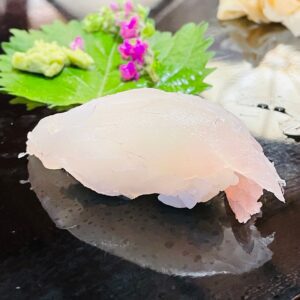
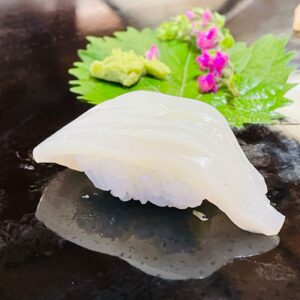
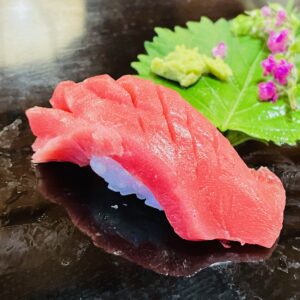
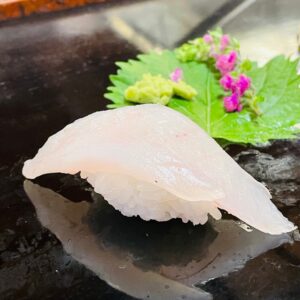
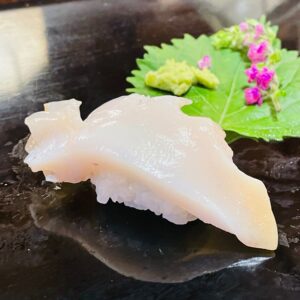
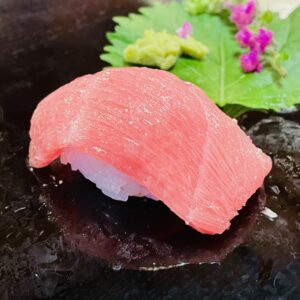
By the way, “Ara (rock-cod) ” (genus Ara) is a very expensive fish with a small catch, and it seems that it is not always in stock. It is a different kind of fish from Ara (longtooth grouper), which is the name of Que (genus Mahata) in Kyushu. “Ara (rock-cod)” is in season from autumn to winter.
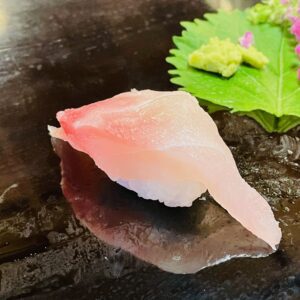
“Matou dai (John Dory)” is a fish that is also called a Mato dai ( Mato sea bream). It has a pattern like the target of archery, and it is a fish with a completely different appearance from red sea bream. It looks like a stephanolepis or a black scraper. It is also called horse head sea bream (John Dory) because its face resembles a horse. “John Dory” is in season from autumn to winter.
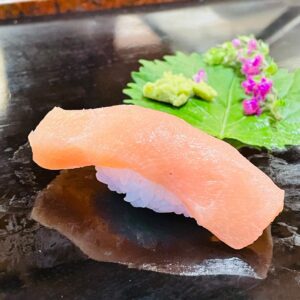
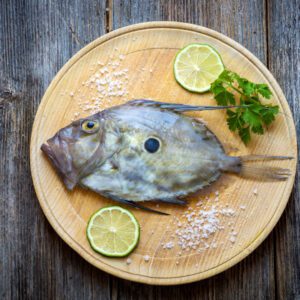
“Gando” is a fish that is one step before the Japanese amberjack and is the name used in the Hokuriku region. It is a fish called “Mejiro” in Kansai and “Warasa” in Kanto. “Gando” is in season from autumn to winter.
-300x300.jpg)
2. Snack “Hanayama-tei”
After the tour of Natadera temple, I had a lot of time before the departure time of the route bus, so I had “Goma tofu (sesame tofu)” and craft beer at “Hanayama-tei” near Natadera.
Sesame tofu is one of the vegetarian dishes, which was religiously eaten by monks who did not eat meat as a substitute for meat. You can eat sesame tofu not only at Natadera temple but also around many temples. I was able to eat two types of tofu, white sesame tofu using only white sesame and black sesame tofu using black sesame.
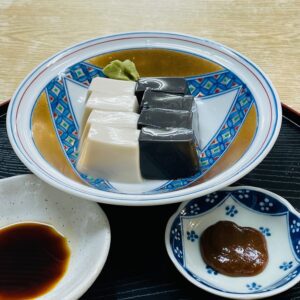
“Hakusan Waku Waku Beer” is a beer made at “Waku Waku Handmade Farm Kawakita” in Kawakita Town, Nomi District, Ishikawa Prefecture, using locally produced beer wheat and rice “Koshihikari” as an auxiliary ingredient. Since it is an agricultural corporation, it is produced from raw materials on the farm. “Kanazawa Hyakumangoku Beer” is a famous brand beer that you can buy at Kanazawa Station.
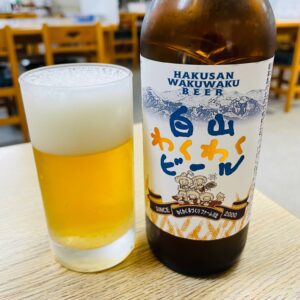
3. Dinner “Cho-hachi Kanazawa Katamachi store”
After checking in at the hotel in Kanazawa city, I had dinner at “Cho-hachi Kanazawa Katamachi store”. “Cho-hachi” has two stores in Kanazawa city. You can relax and eat Kanazawa’s local cuisine, mainly seafood.
This time, I had Yanagi Hachime (Goldeye rockfish) otsukuri (sashimi), steamed blackthroat seaperch sushi, Kaga Jibu-ni, vinegared Kinji-sou, fried semifasciatus satsuma-age, and northern shrimp with raw shichimi (red pepper with seven kinds of spices) and grilled sailfin sandfish.
Yanagi Hachime is Goldeye rockfish. In Ishikawa Prefecture, the rockfish family is called “Hachime”. It is the spring “PRIDE FISH” of Ishikawa Prefecture selected by Japan Fisheries Cooperatives. The season is from March to May, but it seems that it is a fish that can be caught all year round. In Kansai, sashimi is called “Otsukuri”.
-300x300.jpg)
Blackthroat seaperch and northern shrimp are autumn “PRIDE FISH” in Ishikawa prefecture. Both blackthroat seaperch and northern shrimp are in season from September to December. I ate “Steamed blackthroat seaperch sushi” for the first time, and it was very delicious because it was a sushi with a gentle taste while feeling the elegant fat of blackthroat seaperch. “Northern shrimp with raw shichimi” was also a very delicious dish with the sweetness of sweet shrimp accentuated by the raw shichimi.
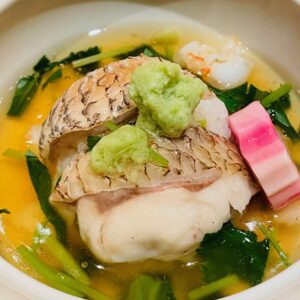
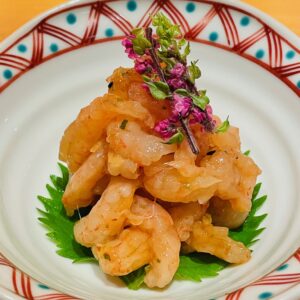
Semifasciatus and sailfin sandfish are fish that are often caught in Ishikawa Prefecture. In Japan’s catch ranking by prefecture, Ishikawa Prefecture is ranked 1st for semifasciatus and 3rd for sailfin sandfish. October is the best season for both semifasciatus and sailfin sandfish, so I was able to enjoy the delicious food.
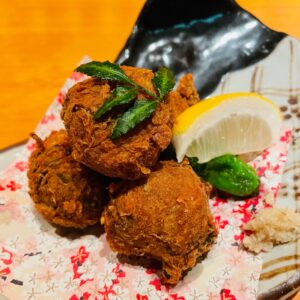
焼き-300x300.jpg)
Kaga Jibu-ni is a local dish of Ishikawa prefecture. It has been selected as one of the “100 selections of local dishes” by the Ministry of Agriculture, Forestry and Fisheries. It had a gentle taste and was very delicious.
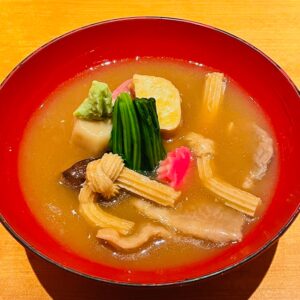
Kinji-sou is a Kaga vegetable. It features a slightly slimy texture. It’s a very delicious vegetable and I love it. There are 15 items certified as Kaga vegetables, including Kinji-sou.

From the first day of the trip, I was very happy to be able to eat many seasonal seafood and local dishes at a restaurant that offers delicious meals for both lunch and dinner.
Note: The departure / arrival times, fees, admission fees, etc. of transportation listed in the text are as of the time of writing the BLOG. They may change in the future, so please check for yourself when you go on a trip.